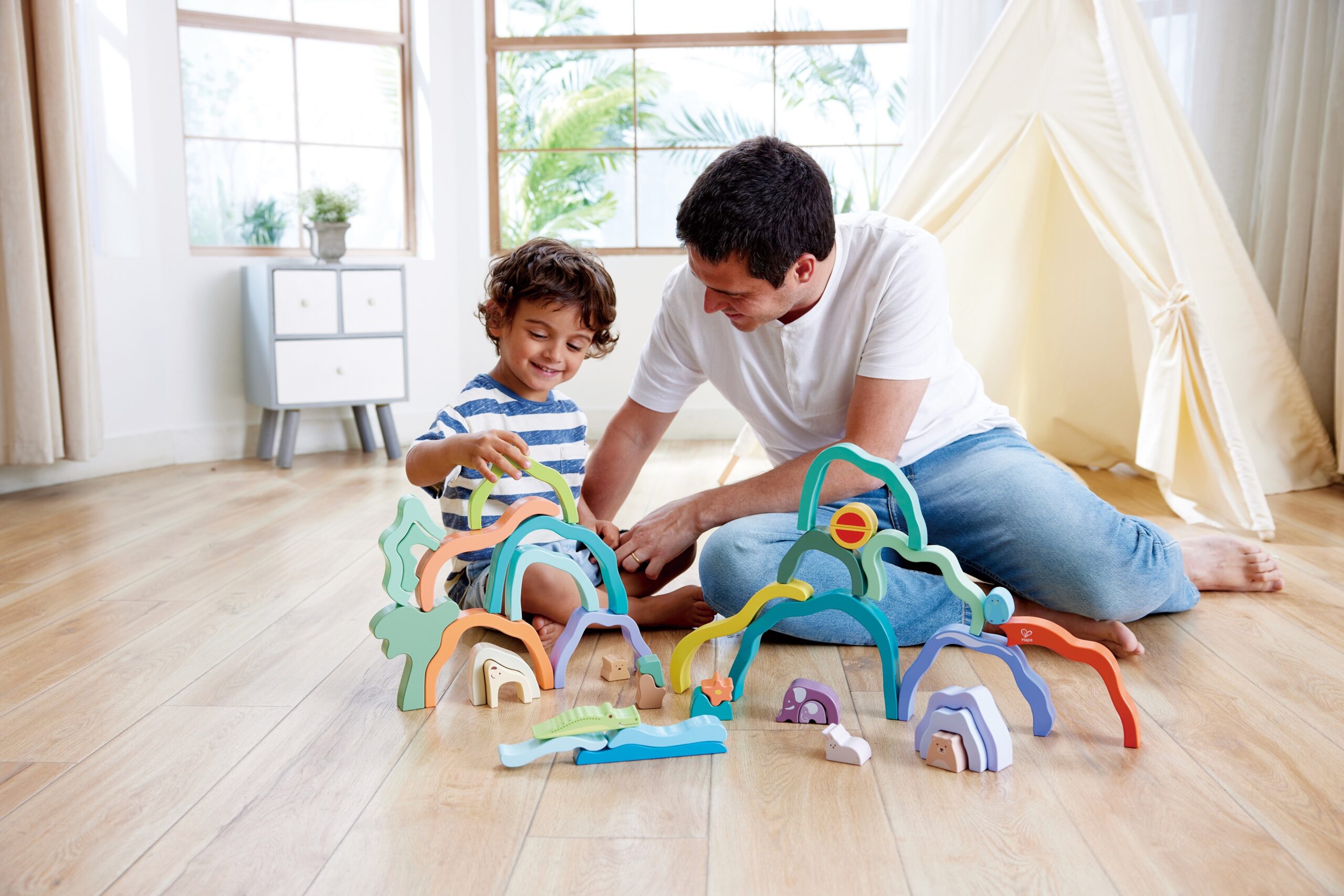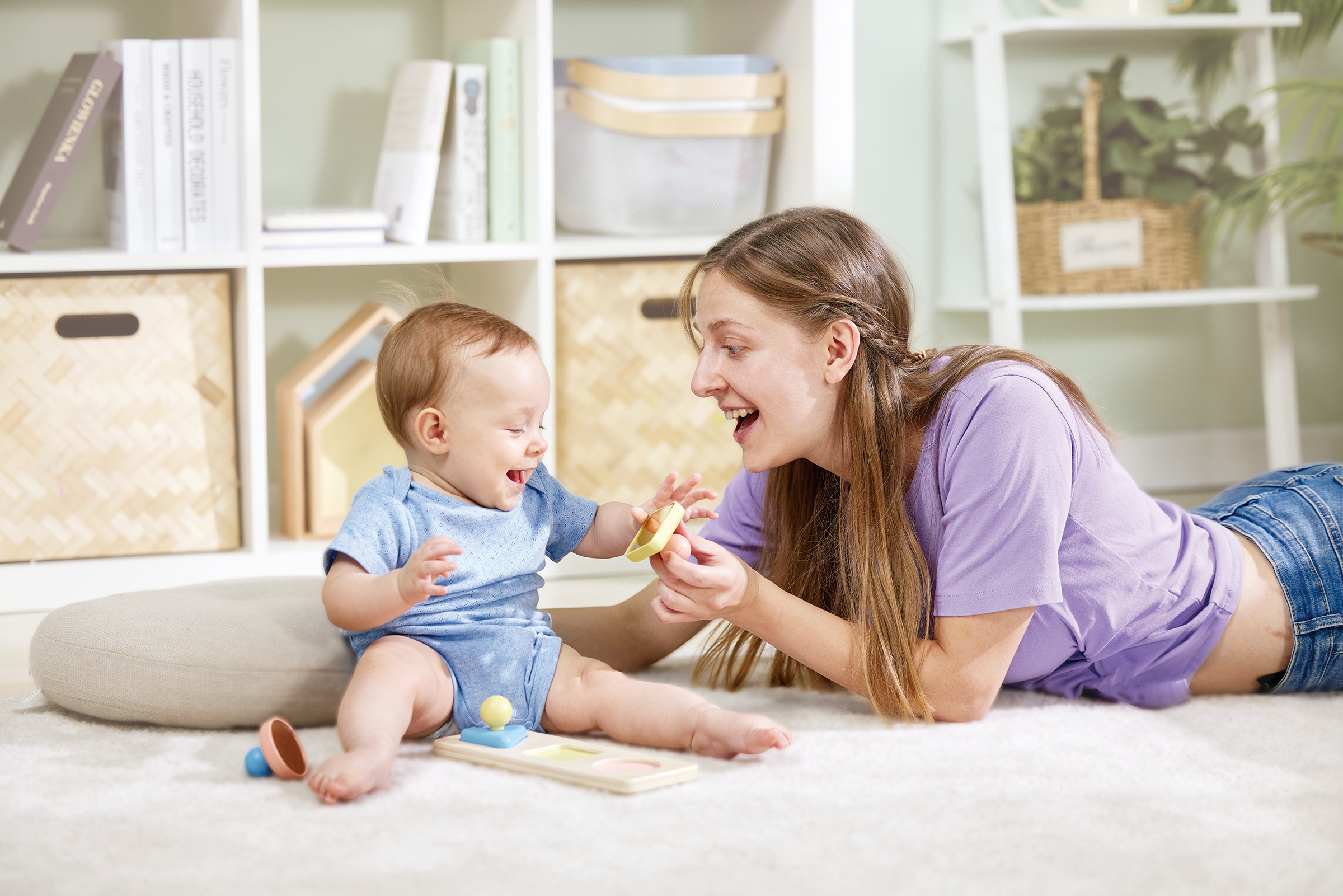Montessori, a word you’ve certainly heard with the recent rise in popularity due to Montessori toys, but these toys aren’t just a passing trend – Montessori principles have existed since 1907!
Montessori toys are educational tools designed to support the principles and methods of the Montessori educational approach, developed by Dr. Maria Montessori.
These toys are intended to encourage children’s natural curiosity, fostering independence and facilitate hands-on learning.
If you’re on the lookout for some Montessori toys, here are some key characteristics that you can follow when deciding if the toy is in fact a Montessori one:

A prepared environment is an important concept of Montessori learning, and natural materials are highly appealing to children. Plus, the simplicity of natural materials creates more opportunities for open-ended play. Often made of wood, metal, cotton, or other natural materials, Montessori toys avoid plastic and synthetic substances.
Whilst all toys are designed for a reason, Montessori toys go a step beyond and have a specific educational purpose. For example, it could help children develop their fine motor skills as they pick and stack blocks or they can develop their cognitive abilities as they piece a puzzle together.
Many Montessori toys allow children to identify and correct their own mistakes like a shape sorter – a child will recognise that if the shape doesn’t fit, they should try again until it does. Trial and error help to promote problem-solving and critical thinking skills. It’s important to note that it has to be a specific control of error, allowing the child to discover and correct their mistakes without the need of adult assistance.

Montessori toys are also great at encouraging children’s creativity and imagination as the toys don’t have strict rules on how to play. Unlike a puzzle, open-ended toys like dollhouses have no rules, allowing children to use the toys however their imagination lets them. For a more detailed guide on Open-Ended play, check out our other blog article!
Finally, and is often argued as most importantly, some Montessori toys are designed to mimic real-world objects such as cleaning sets, kitchens and even tea sets all portray real-life experiences, which in turn, help children to learn practical skills that they can take with them through life. helping children learn practical life skills.
So, what are some actual examples of Montessori toys? For a toy to be a Montessori toy, you don’t need to break the bank – something as simple as a sandwich bag with water and peas is plenty of sensory stimulation for growing minds. Or for more grownup children, get them to help you in tasks (if patience allows for it).
If you are after some more specific toys, we recommend these:
Stacking and Nesting Toys:
Such as wooden blocks, stacking rings, or nesting cups, help develop baby’s and young children’s hand-eye coordination and their understanding of size and order.
Sorting and Matching Toys:
Shape sorters or card-matching sets help to promote children’s colour, shape and pattern recognition.
Sensory Toys:
Texture boards, rainmakers or DIY smell jars all help to enhance a child’s senses and their sensory development through touch, sound, and smell.

Real-life Tools
This includes child-sized kitchen tools such as safe knives, cleaning sets or dressing frames for children to reach and choose their own clothing. Each one will help teach everyday skills and improve your child’s independence.
Puzzles & Manipulatives
Simple wooden puzzles, bead stringing sets, or interlocking discs help improving a child’s problem-solving skills as well as handy, fine motor skills.
Mathematics & Language Toys
These toys can be anything that is designed to introduce early math and literacy concepts. Whether that’s alphabet and phonic blocks or beaded chains and number rods.
In summary, Montessori toys are just a handy tool you can choose to incorporate into your child’s upbringing. All that’s important is that there is a focus on connecting it to the Montessori method of education – supporting self-directed activity, hands-on learning, and collaborative play in a carefully prepared environment. It’s important to note that this method is not made for every parent as it requires time, commitment and a whole lot of patience, so take what you can as your child will learn new things regardless!
